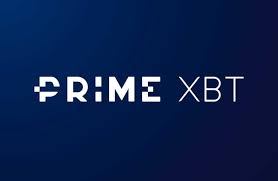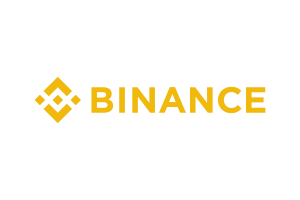Why do we not use retail FX platforms for everyday purchases and transactions? Op Ed
The complexity and sophistication that has been woven into today’s retail trading platforms has been the result of a very rapid development cycle which began approximately three years ago and has been the subject of an average three months between the launch of new features and in many cases, revolutionary methods of conducting FX trading. […]

The complexity and sophistication that has been woven into today’s retail trading platforms has been the result of a very rapid development cycle which began approximately three years ago and has been the subject of an average three months between the launch of new features and in many cases, revolutionary methods of conducting FX trading.
With the continuing advancement of trading platform technology and the electronic liquidity ecosystem that is behind each user interface which is so easily usable from any device in any global location, a demand from retail traders for even greater sophistication and functionality arose.
Yes, the age of the opensource platform which provides everyone from retail users to white label partners such as local banks with the opportunities to develop their own applications is well and truly on us, and the drive toward providing a multi-asset trading experience has mushroomed across all retail firms over the last two years worldwide, however with all of this research and development being channeled toward an ever-regulated, leveraged and risk-prone business, an interesting conundrum is perhaps to take a look at why retail FX trading platforms have not taken on the role of automating the transfer of FX order flow not for trading purposes, but for business and cross-border trading between individuals and companies.
Use of FX platforms for receiving invoices or salary payments
Back in the early 1990s, a common practice in Austria was to take a mortgage on a house in Swiss Francs, due to lower interest rates, however this was all conducted manually and once in place was not flexible, and the costs incurred by the banks and individuals were often large.
In the early Millenial years, with the booming high technology industry in countries across the entire world, global travel became far more common among middle management, and working for overseas companies and receiving salaries and invoice payments in foreign currencies became much more commonplace, however until this very day, no salary or invoice payments from overseas companies are paid to workers via a retail platform which could execute these transactions immediately into local currency from a mobile device, at an instant market price rather than the bank’s set price, and without bank charges or the length of time that it takes a bank to process SWIFT payments (and trade the incoming money on their own proprietary platforms for a week!)
With the connectivity by single API of retail platforms to liquidity aggregators and the live currency markets, there is no reason why an additional feed can be connected to such adaptable platforms which would use the real-time prices achieved by advanced retail liquidity feeds to a payment provider which conducts risk management and global payment settlement – many of which exist today but restrict their services only to the funding and withdrawal of trading accounts – and then orders could be sent to convert currencies immediately and then pay the receiving party immediately with little cost and no commission.
Spreading the risk via diversification to cross-border settlement
Retail FX trading firms which abandoned the B-book model and transferred trades directly to the live market via an agency model were indeed doing the right thing by emulating the institutional trading ethos, however due to the vast capitalization and counterparty risk strategies that banks and institutional commodities and liquidity providers have in place, market volatility within a leveraged FX trading environment which could cause negative client balances is often offset against either huge capital reserves or solid commodities that have a larger intrinsic value than any liquid FX trading.
When the Swiss National Bank removed the 1.20 peg on the EURCHF pair in January 2015, retail firms that operated on an agency order flow basis suffered tremendous exposure to negative client balances, in some cases running into the hundreds of millions of dollars. Indeed, some brokerages did not survive and actually declared insolvency.
By offering direct FX settlement via a retail platform, brokerages could once again comfortably offer the agency model to their retail customers for trading FX pairs, and generate a cash surplus via the order flow handled processing monthly cross-border lease payments, invoices, remittances, salaries and other consumer-orientated items and charging a trade commission which would be less than the banks, and a more effective service. The agency model would extend itself to this side of the business, where client funds are not held, just transferred from one currency to another via a trading platform and then paid out to the recipient.
This means no leverage, no risk, yet a per-lot commission which brokerages would use to diversify their market base and use against counterparty risk.
Automation via EAs and copy trading platforms
For those wishing to set up regular payments, EAs and copy trading software could be used.
Such technology does exist – Saxo Payments uses its own proprietary system under the Banking Circle solution, keeping FX rates low and facilitating immediate cross-border payments, however this is conducted via a dedicated banking platform and is specific to Saxo Bank’s banking and payments division. It does, however, exemplify Saxo Bank’s fintech orientated approach and can be considered to be a pioneering effort in this direction, however I think that actual trading accounts and trading platforms can be used for this purpose with very small adaptations.
Today, investments in the development of technology that will automate traditional banking solutions such as ledger, and settlement with other banks, is heading toward widespread installation of blockchain, which was developed for the purposes of peer-to-peer virtual currency transactions with no corporate backing and outside of the central banking network.
Free new Corvette?
Just this week, Overstock which is a retail consumer goods giant invested in Bitt, for the development of such technology, therefore it is clear that the possibilities of extending retail trading in all of its forms outside of the financial markets sector is indeed a very viable proposition indeed, and with very little adaptation required.
Fancy leasing a new convertible to keep at your second home in Florida, in US dollars, without having a US bank account, payable automatically with no commission and no bank or SWIFT fees at the touch of a button on a mobile trading platform, and covering the monthly lease costs from profits made by trading EURUSD on the same completely automated platform with the same brokerage? Now there’s a thought….
Photograph courtesy of LA Auto Show









